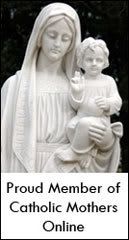Thursday, October 30, 2014
On the Level w/ HandyGramps - Hallowe'en Part 2
So, where does the Church fit
into all this? Well, by the fifth
century various churches throughout Christendom were celebrating a special
feast day to remember the martyrs. The
actual date varied, but the most common was May 13. Soon after, saints other than martyrs were
being included in the feast. Although
history is a bit sketchy on this, it is likely that during the pontificate of
Gregory III (A.D. 731-741) a feast for saints was established on November
1. Later, Pope Gregory IV (827-844)
moved the May 13 martyrs’ celebration to coincide with the November 1 feast,
thus creating a feast for All Saints. By
the eleventh century All Saints Day (November 1) and All Souls Day (November 2,
added to include the souls in Purgatory) had been permanently linked. Once the Feast of All Saints had come into
its own in the mid-ninth century, All Hallow’s Eve – Hallowe’en – became its
vigil.
From the Middle Ages on the
customs of Hallowe’en evolved to what they are today. The idea of “Trick-or-Treat” was founded on
the practice of placating mischievous spirits to prevent their
prankishness. The costumes, once meant
to hide the folk from being recognized as mortals by the impish spirits, became
parodies of saints for those poorer congregations who could not afford the
stipend for real relics of saints. Along
the way, angel and devil costumes entered the picture to help complete the
concept of God’s justice for humanity.
Thus, Hallowe’en became a sort of morality play in which everyone could
play a part. By acting out the various
things that could happen after one dies, a somewhat primitive theology was
taught to an illiterate populace.
Hallowe’en gave us a chance to
reflect on the mercy and justice of God, to witness in pageant form the promise
of life after death that we celebrate on All Saints Day and All Souls Day. It reinforced the simple precept of faith
that God is, after all, in charge and that there is nothing in creation that can escape His justice. In short, no matter what, good will always
conquer evil.
Since then, Hallowe’en has,
sadly, degenerated into a purely secular fun day. The central meaning has been lost, replaced
by a superficial celebration completely separate from any festival of saints. Therein lies OUR failure. Our task now, as parents and educators, is to
somehow restore what was lost. Instead
of criticizing Hallowe’en as something evil and hideous, instead of trying to
shout it down as the work of Satan, instead of pulling the plug on it, we
should be going out of our way to dress our children in costumes – saints,
angels, devils, skeletons, ballerinas, princesses, pirates, hoboes, and
scarecrows – and sending them out with a sense of what life and death are
really about. No child is too young to
understand as long as we tailor the lesson to their level of
comprehension. We do this all the time
with other things in life, so why not in this matter of faith?
There is one thing we can do that
will certainly place Hallowe’en in its proper perspective, something that will
benefit not only our children but us adults as well. Before Hallowe’en arrives, we can set the
stage for a celebration of the “Triduum of Saints” – a three-day celebration of
life, death, resurrection, and eternity.
This would be a marvelous way for an entire parish to celebrate the
meaning of eternal life, to incorporate the true meaning of Hallowe’en into the
vigil Mass for All Saints, celebrate All Saints Day, and cap it off with a
special Mass on All Souls Day. It
would be a marvelous time for a parish party, complete with bobbing for apples,
prizes for best costume, and all the other trappings of a good, Christian
celebration of Hallowe’en. And, if it
can’t be done for whatever reason at the parish level, do it at home. Have special family prayers on Hallowe’en
before you send the kids out in costume.
Help them understand just what their costumes and activity are all
about. Then, attend Mass the next two
days as a family.
Our faith enjoys a rich
tradition, much of it based on pagan customs and rituals that have been turned
to Christian purpose. We would be
remiss, indeed, if we allowed such a heritage to slip through our fingers, all
because we have misunderstood or forgotten the real reason behind it all, or –
worse – because we have allowed the dark side of our humanity to take
control. God has given us a wonderful
gift, the ability to make decisions in perfect freedom. We, in turn, have the responsibility to make
those decisions wisely. Let’s decide now
to make Hallowe’en a more meaningful holiday than ever.
Long live Hallowe’en!
_____________
Bibliography
“The (Columbus Diocese) Catholic
Times”; reprint of article published October 28, 1988.
Hallowe’en; [?] “Enquirer”; Charles Durrett; no date.
Is Hallowe’en a Christian Feast?; “Religion Teachers’ Journal”;
October 1980, pp. 4-5.
All Souls Day; “New Catholic Encyclopedia”; 1961 (1981 edition);
Vol. 1, p. 39.
The Story of Hallowe’en;
“St. Anthony Messenger”; October 1996; pp. 54-55.
_____________
November
4, 2004
October
23, 2014
Posted by Maria at 7:30 AM
Labels: Halloween, HandyGramps
Subscribe to:
Post Comments (Atom)






0 comments:
Post a Comment